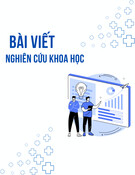2/e
P
P T
©2007 by the McGrawHill Companies, Inc. All rights reserved.
15
Creating a Career and Designing Résumés
©2007 by the McGrawHill Companies, Inc. All rights reserved.
McGrawHill/Irwin
Creating a Career
Creating a career means selecting the right field and matching your skills to the job you want and will enjoy.
© Brand X Pictures/PunchStock
3
A Career-Finding Strategy
• Examine Your Professional Goals and
Interests
• Find Out More
◦
business professional means to spend time watching him or her perform in the work environment
4
Shadowing
A Career-Finding Strategy
• Find Out More (continued)
Visit the campus career counseling center or
placement office.
Check out employment planning and job listing
websites on the Internet.
Network with professionals in the fields that
5
interest you.
A Career-Finding Strategy
• Find Out More (continued)
Take a part-time or freelance job in the field.
Read trade journals.
Review classified ads in newspapers.
6
Write exploratory letters to companies.
A Career-Finding Strategy
• Create a Professional Inventory of Skills
and Abilities
◊ oral and written communication
◊ second languages
◊ problem solving
• Take a Temporary Job
7
◊ computer proficiency
Designing Your Résumé
Résumé
8
◦ a written marketing tool that briefly summarizes your skills, abilities, education, and experience for a potential employer
Résumé Formats
Chronological Résumé
◦ a traditional format organized by positions
Functional Résumé
held, starting with the most recent
9
◦ presents relevant skills and achievements in categories rather than under job titles. It does not require dates of employment or titles.
Résumé Formats
Targeted Résumé
◦ a customized format tailored to a precise
Integrated Résumé
career field or job. It contains only the content that applies to a set of job requirements.
Scannable Résumé
◦ includes aspects of all the other formats
◦
10
formatted in plain text for electronic scanning systems
Résumé Formats
TABLE 15.1 Scannable Words
11
Sample Résumés
FIGURE 15.1 Chronological Résumé Format
Indicate date that degree will be completed.
List courses related to the position you are seeking.
Use bullets to identify accomplishments.
Capabilities demonstrate skills you want to highlight.
12
Boldface job titles and bullet major duties.
Use dates to indicate
time spent in
positions.
Sample Résumés
FIGURE 15.2 Functional Résumé Format
List courses that demonstrate competence in the field where you are seeking employment.
Group career and other experiences into categories that emphasize relevant skills and strengths.
Downplay scant work history by placing it at the end of your résumé.
13
Sample Résumés
FIGURE 15.3 Targeted Résumé Format
List academic activities that are tailored to the field.
Use a special heading to highlight work experience that matches the job or field.
Limit experience listed to a specific job or career field.
14
Other related academic activities and skills can be listed at the end of your
résumé.
Sample Résumés
FIGURE 15.4 Integrated Résumé Format
Bullet information in categories.
Group related experience and skills in categories.
List job experience from most recent first as you would using a chronological format.
Separate responsibilities and accomplishments for each position.
15
Place your education at the end of the résumé if it is not directly applicable to the position or if your
experience is stronger.
Sample Résumés
FIGURE 15.5 Scannable Résumé Format
Use key words that match the job description or listing.
Use a single- rather than a two- column format.
Use asterisks or hyphens rather than bullets for lists.
Use white space so scanner can identify and read separate categories.
If you indent, use the space bar rather than tabs.
16
Avoid the use of bold, italic, or underlining when formatting the résumé.
Résumé Ingredients
Identification
◦ a heading centered on top of the first page of a résumé that includes your full name, home address, telephone number, and e-mail address
Education
◦
includes academic degrees earned, major field of study, date your degree was completed or anticipated, and your grade point average (GPA)
17
Résumé Ingredients
Accomplishments
◦ something you have achieved or produced by
Capabilities
using your talent and skills
◦
Professional experience
the abilities you possess, such as communication skills, computer proficiency, and second languages
◦
18
full-time, parttime, volunteer, internship, and self-employment experience
Résumé Ingredients
TABLE 15.2 Action Verbs
19
Résumé Ingredients
References
◦ people who know you personally, your work, and your talents and who will recommend you for employment
20
Résumé Ingredients
• The Problems with Résumés
does not identify accomplishments or
achievements
contains falsehoods & lies
is long & wordy
21
exceeds the need to know
Résumé Ingredients
• The Problems with Résumés (continued)
is scattered, jumbled, & hodgepodge
contains typos, poor grammar, & misspellings
uses “I,” “me,” & “my”
22
shows obvious employment gaps
Designing Cover Letters
Cover letter
◦ brief and persuasive application document that
23
accompanies your résumé
Designing Cover Letters
• What Cover Letters Accomplish
Distinguish from other applicants
Illustrate knowledge of and interest in company
Identify how key skills and work experience can benefit the company and meet the requirements of the job
Demonstrate ability to express self as a
24
business communicator
Designing Cover Letters
• Writing the Cover Letter
• Steps to Writing Cover Letters
1. one page letter; printed on same paper as résumé
2. direct to specific person not “Dear Sir” or “Director”
3.
in opening, emphasize letter’s purpose
4. build interest in body of letter highlighting qualifications
5.
last paragraph motivates action and makes contacting you easy
6.
thoroughly proofread your cover letter
7. remember to sign your cover letter (in ink)
25
Designing Cover Letters
• Types of Cover Letters
◦
sent in reply to requests for résumés involving open positions
Solicited applications
◦
involves selecting a company and preparing a letter to request an informational meeting
26
Exploring opportunities
Designing Cover Letters
FIGURE 15.6 Sample Solicited Cover Letter
First paragraph identifies how you learned about the position and states that you are applying for the job.
Duties and skills that match the job description can be bulleted.
A proactive closing paragraph indicates that you will be following up to gain an interview.
27
Designing Cover Letters
FIGURE 15.7 Sample Exploring Opportunities Cover Letter
First paragraph demonstrates knowledge of the company.
Bullets highlight the most applicable qualities listed in the résumé.
The close mentions résumé and initiates follow-up.
28
Finding a Job
Networking
◦
29
identifying and contacting people you know who can help you find a job or who may refer you to someone who can help
Finding a Job
Network
Make an employers list
Write exploratory letters to companies on your list
Attend job fairs
Search the Internet
30
Websites for job listings and job fairs
Questions
31

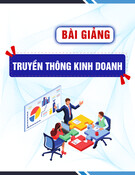
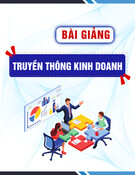
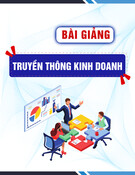
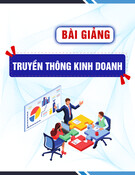
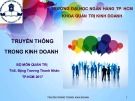
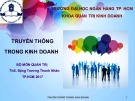
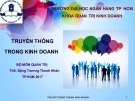
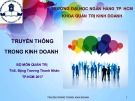

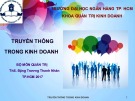
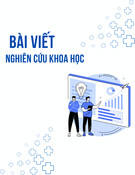

![Đề thi kết thúc học phần môn Truyền thông trong kinh doanh [năm học mới nhất]](https://cdn.tailieu.vn/images/document/thumbnail/2025/20251015/dilysstran/135x160/93281760499390.jpg)
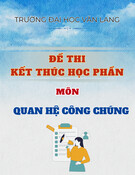
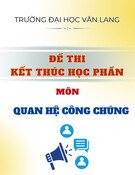
![Bài tập nhóm truyền thông marketing tích hợp [mới nhất]](https://cdn.tailieu.vn/images/document/thumbnail/2025/20250904/hakanami1502@gmail.com/135x160/90671756969236.jpg)
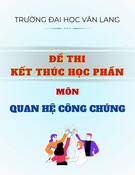
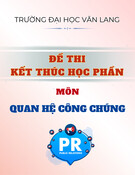
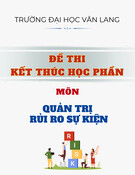


![Định vị doanh nghiệp: Bài thuyết trình [Mới nhất]](https://cdn.tailieu.vn/images/document/thumbnail/2025/20250813/vuthuhuyen1407/135x160/6261755072381.jpg)

